We’d left the west coast of Mallorca to visit the large bay of Pollenca. The scenery isn’t quite as dramatic as the rugged west coast, but it’s still beautiful. To the south, the land rolls gently across farmland before rising to the Tramuntana mountain range; in the distance, we could see the highest peak and its golf ball radar station glinting away. The sinuous spine of Cape Formentor stretches to the north and in the east, Cape Alcudia limits the fetch and curbs the strength of easterly winds.
Pollença Bay is recommended as an all-weather anchorage and the all-around shelter was very appealing. Being on constant alert for changes in the weather can be exhausting! It was a safe place to catch up with some boat jobs, to have some fun exploring the area, and to restock the stores.
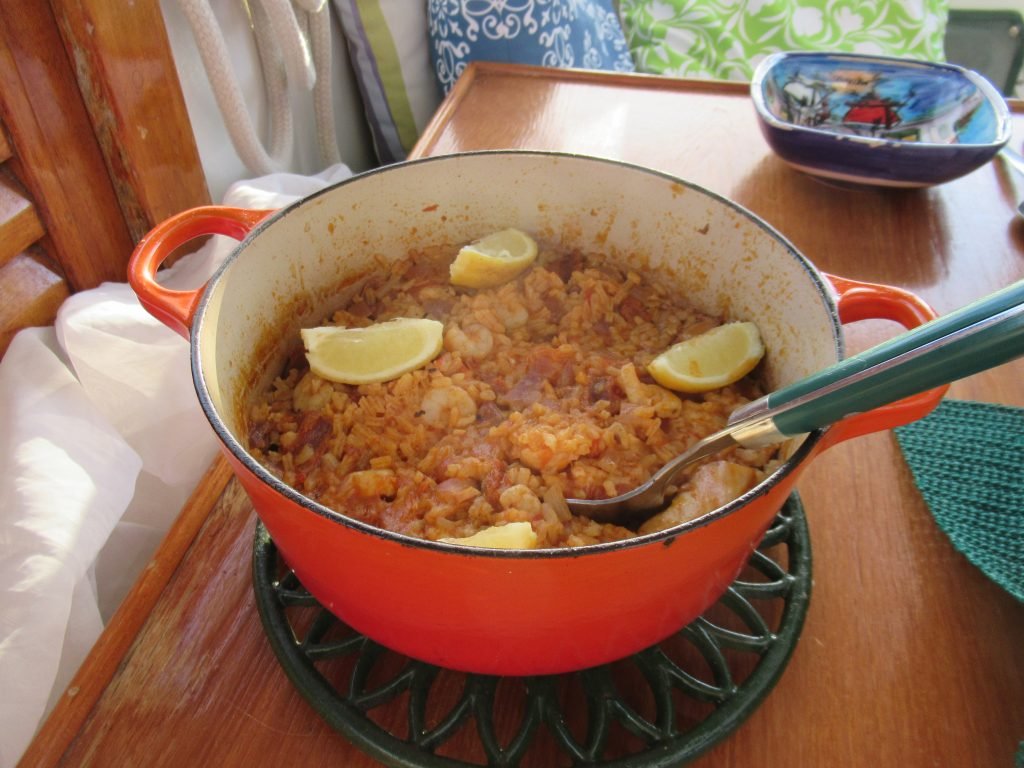
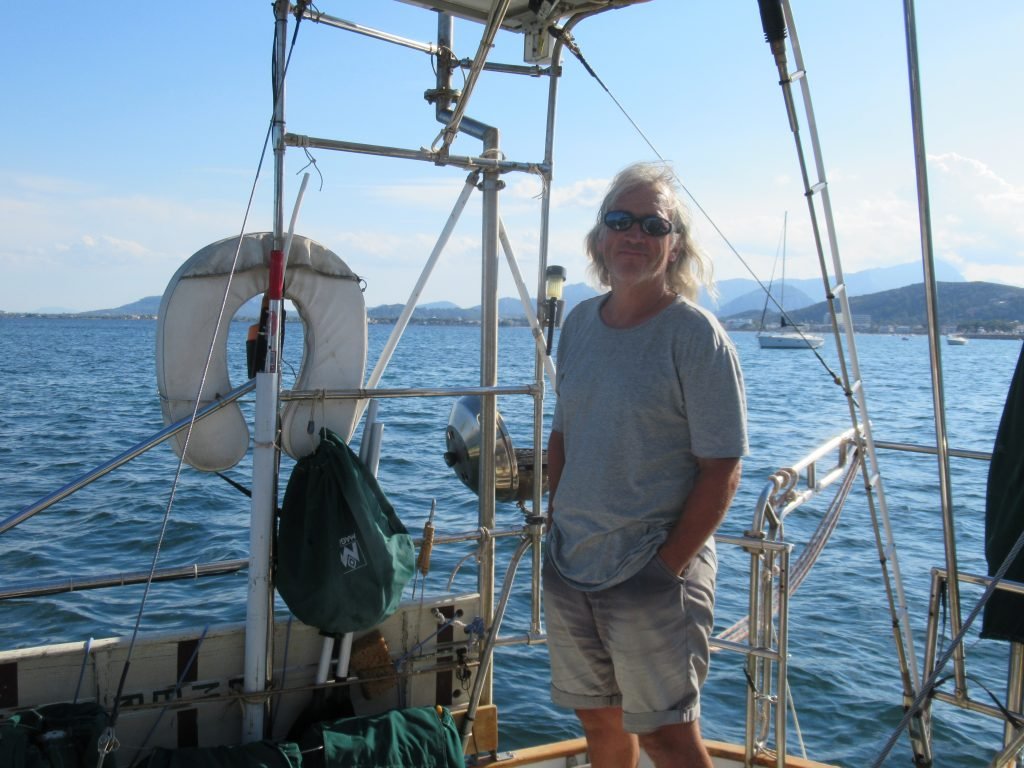
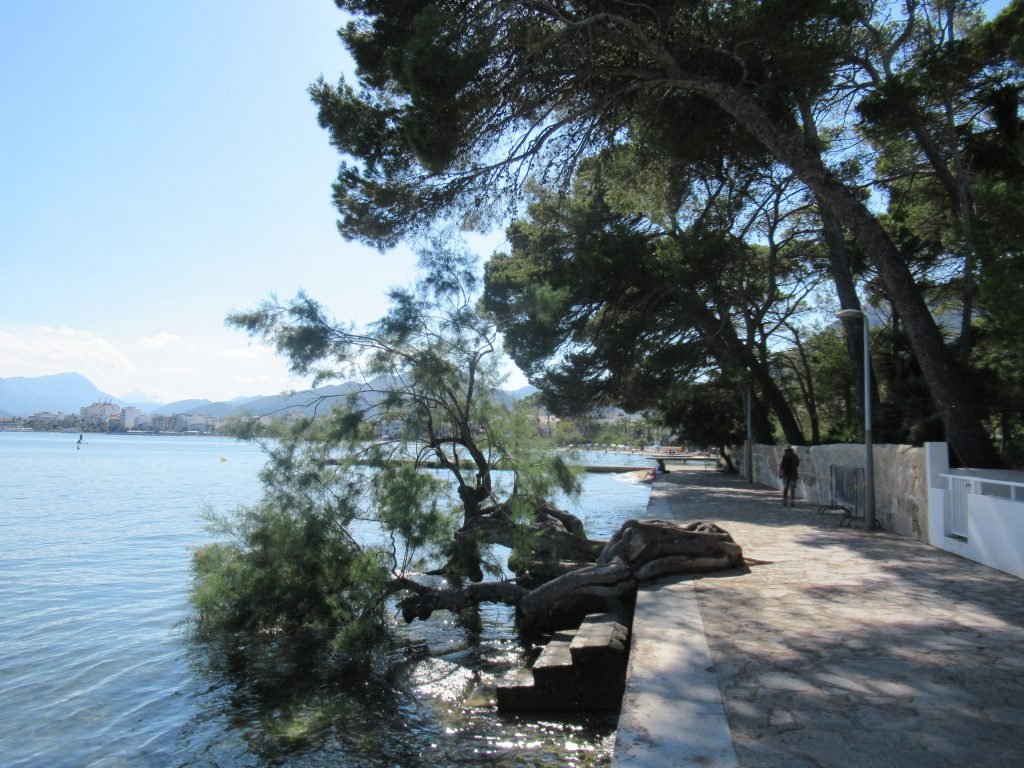
The Anchorage
The safety of the anchorage has attracted many liveaboard sailors with permanent moorings installed across the inner end of the bay. For lovers of old boats, a dinghy around the bay showcases a selection of beautiful old sailing yachts, sadly some looking a little worse for wear.
Even with the space given over to the mooring field, there is still a huge area in which to anchor. There are two areas to avoid: the posidonia field marked by yellow buoys, and the manoeuvring area for the fire fighting seaplane.
Pollença Bay is shallow; only 3 to 4m deep across most of it, and the seabed is easily visible with a light covering of weed. We held first go, but others seemed to struggle – but perhaps that could have been down to their technique? Being shallow, the water clarity changes quickly: clear in the calm mornings when we could watch shoals of tiny fish darting about, to murky in the afternoons when the chop came up.


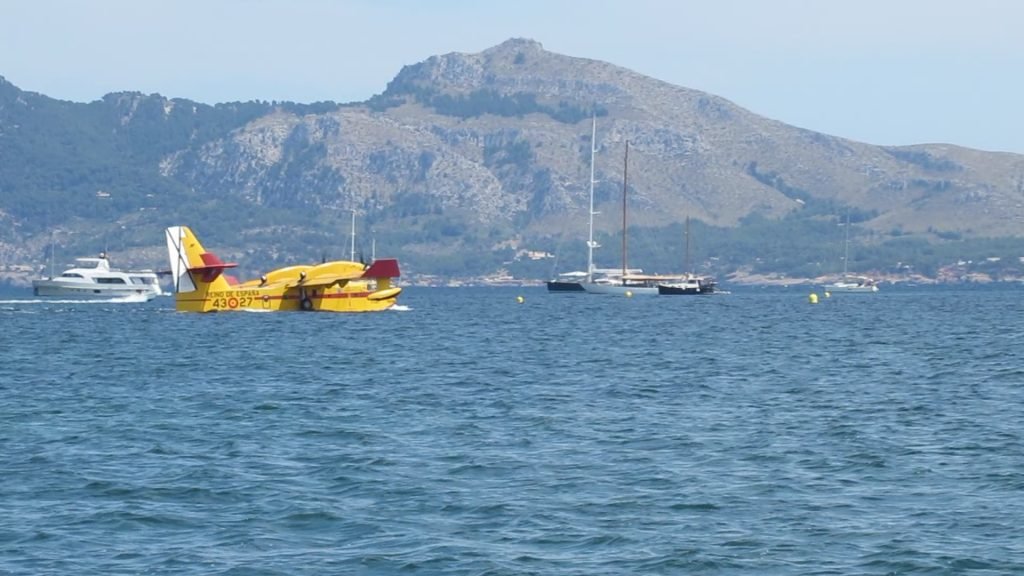

Chop Chop
Most afternoons whilst we were there, a breeze would set in from the northeast, 10 to 15kts, creating a chop. Add to that the wake of the myriad of boats coming and going, and at times we felt like we were living in a washing machine. Thankfully by evening, it would usually all quieten down.
There is a place to securely leave the dinghy, with rings set into the landward end of the marina wall. The holiday town was quiet; evidently, Covid19 was affecting tourist numbers, although there were plenty of bars, cafes, and restaurants open. Several supermarkets, a chandlers, a weekly outdoor market, and a lovely promenade, add to the town’s attractiveness for sailors.
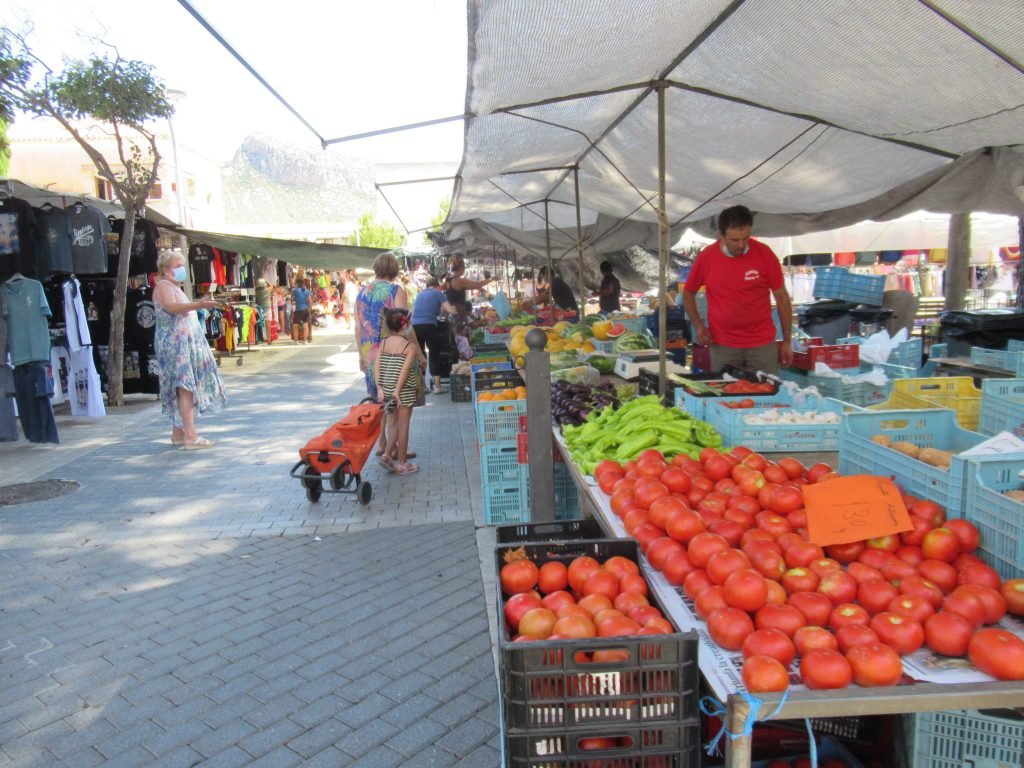
A Walk to Cala de Boquieres
We had hoped to anchor in Cala de Boquieres on our way up the west coast, however the weather wasn’t favourable. Instead we took a walk from Pollenca through a beautiful valley populated with some very friendly goats. Prehistoric man set up home here and we did get a “land that time forgot” vibe as we pushed our way through hip high grass, the only people around.

The Cala looked lovely. Big round pebbles gathered around the shore, further out we could see with clear blue water over sand. The beach showed evidence of how strong the wind can blow in here. Debris and reed sticks were piled upon the shore, which enterprising people had built into sun shelters.
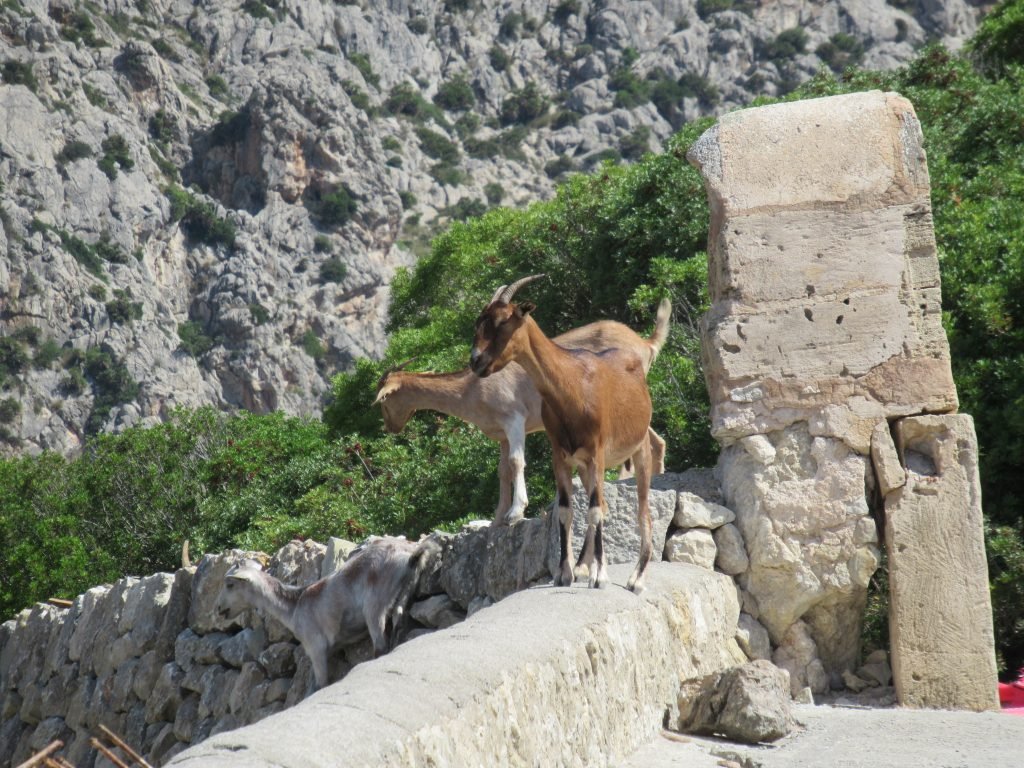
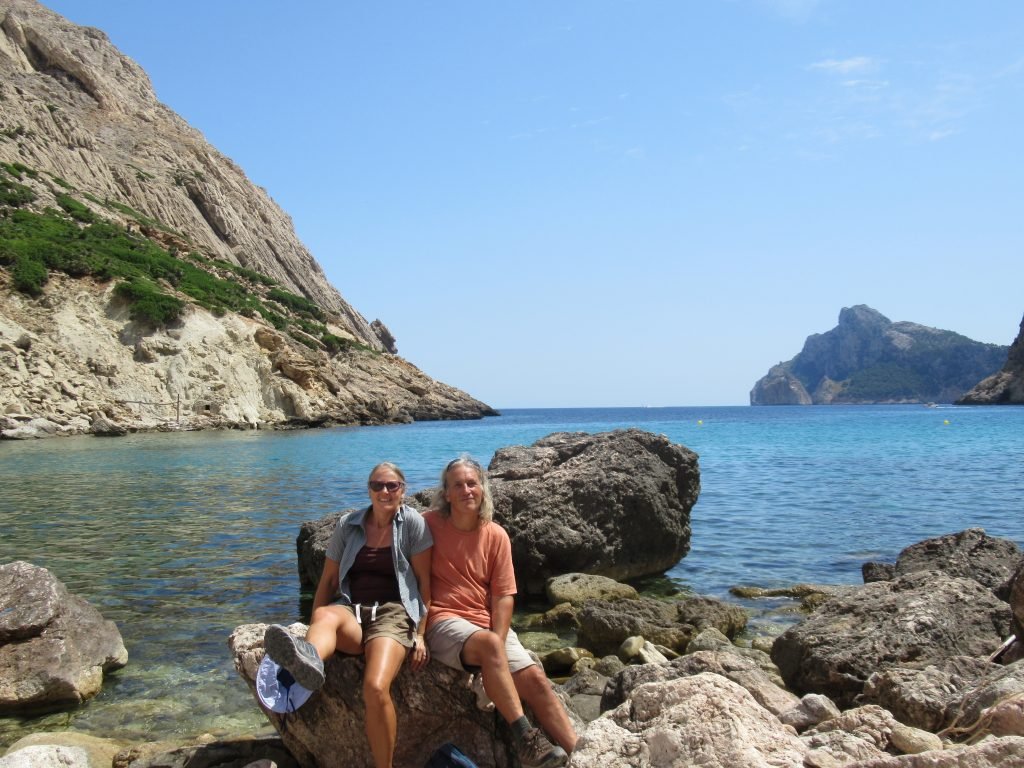
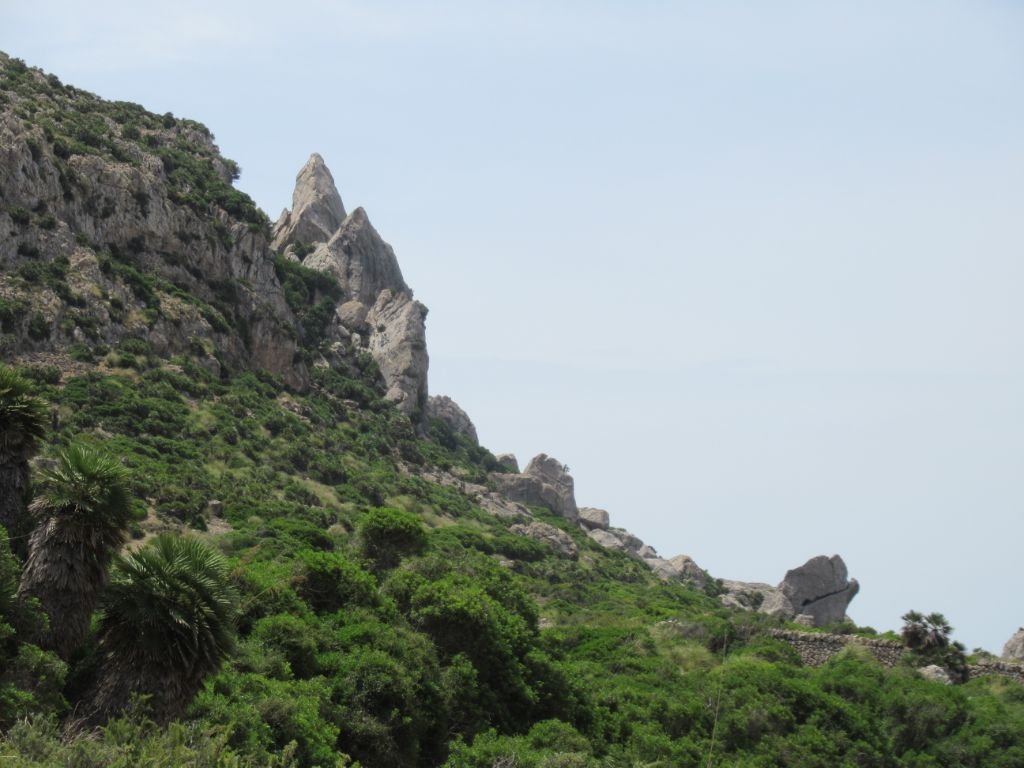
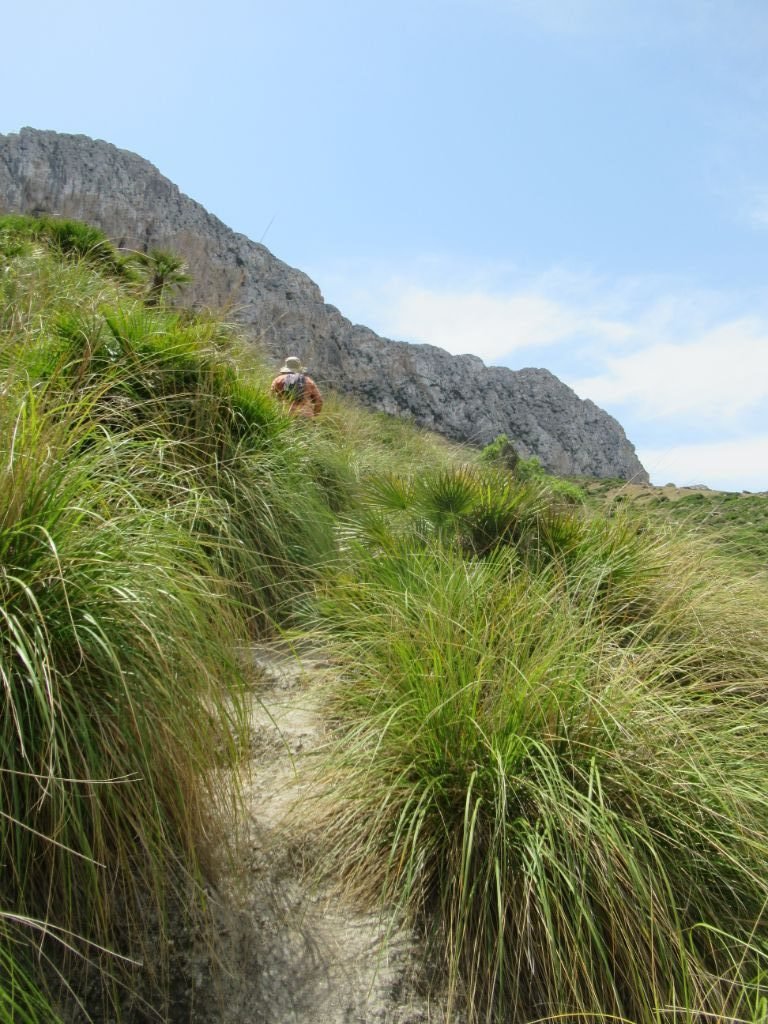
Another Walk, to Cala St. Vincenc
Cala St Vincenc is another bay on the west coast, that has been built up into a small resort. We walked across from the port, up and over a saddle with views around the surrounding hills.
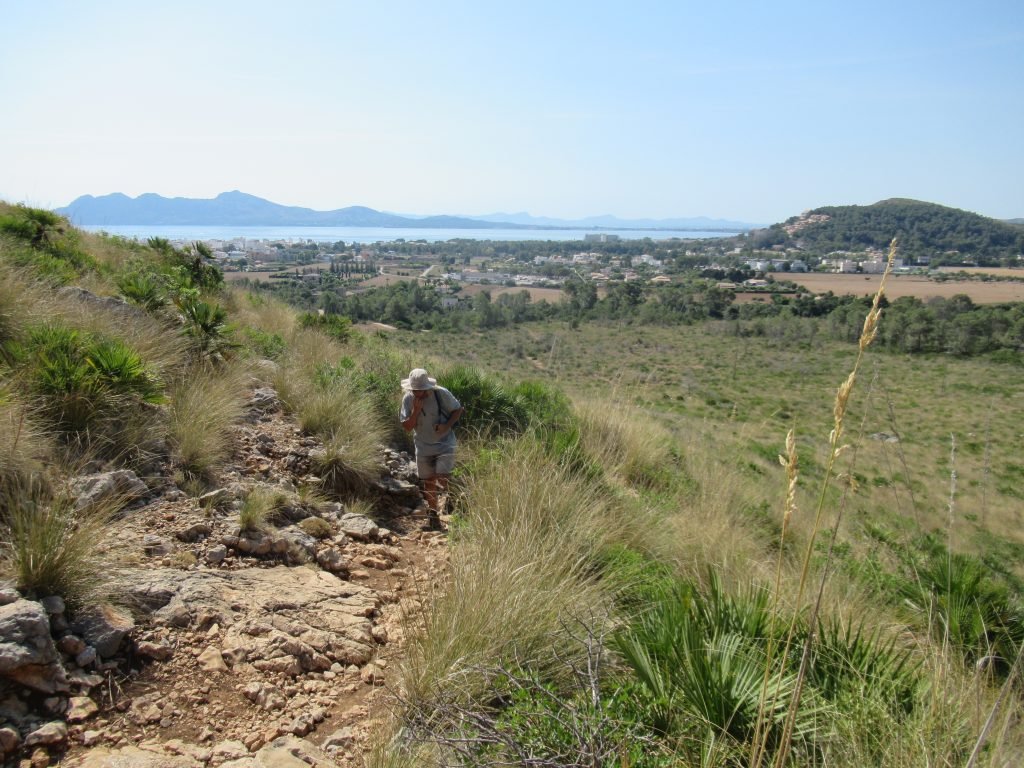
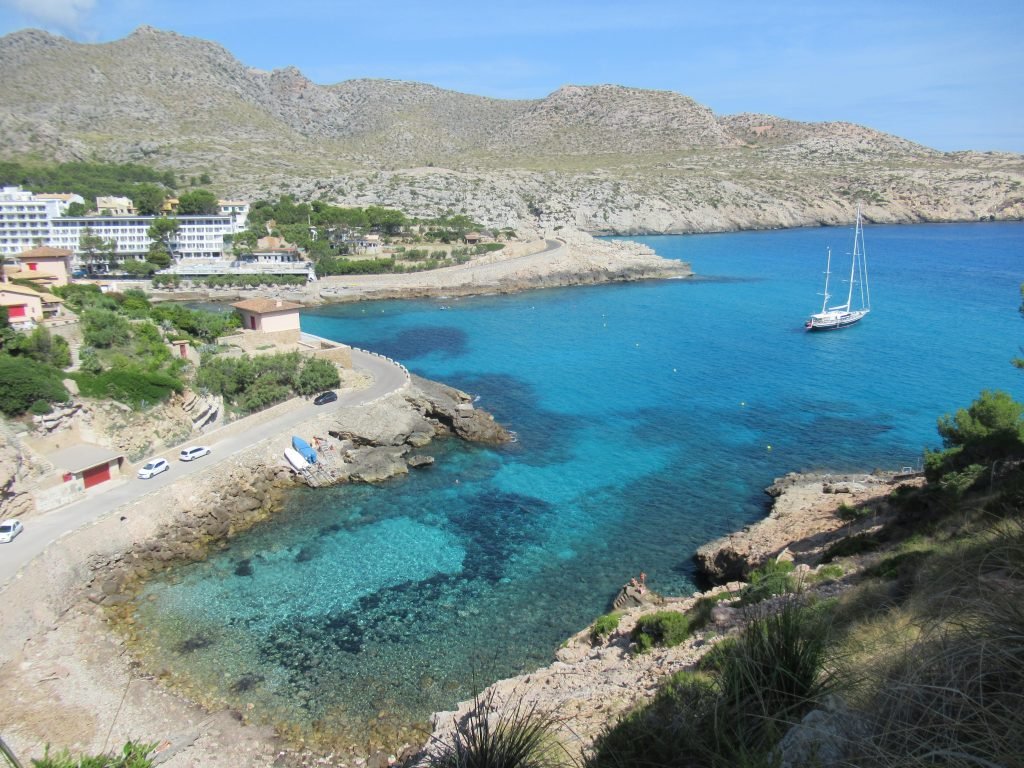
Swapping Wind Power for Pedal Power
Port de Pollenca is billed as the bicycle capital of Mallorca. There are a large number of bike hire shops to cater for visitors who want to ride the twisty roads through the Tramantuna mountains or the challenging route out to Cap de Formentor. We went for something a little more sedate – a cycle along the bike path around the bay and out along the Alcudia peninsula, returning via an inland route on quiet, country lanes with pretty pastoral scenes. It’s been over a year since we last rode a bike, and the small hills we encountered certainly got the blood pumping and our thighs quivering.




Pollenca Old Town
We had to collect a delivery from Pollenca town, which was a good excuse for a visit. The fridge played nice for a change, and we were ashore in time to catch the 9:45 bus. This was good, as we planned to walk 300m up to the sanctuary on Puig María, and the air temperature was forecast to reach 32C that day.
The route up follows a twisting tarmac road for the first part, welcome shade provided by leafy trees. Even with so many switchbacks, there were some steep sections. Just below the top, the tarmac becomes a cobbled path. The feet of countless pilgrims and tourists over the centuries have worn the stones slippery smooth. OK going up, a little trickier going down. With gravity assist on the way back, we both made a couple of unintended tiny slides. Though we just about managed to stay upright.
The fourteenth century building on the peak is lovely, an oasis of peace and calm with a small chapel and simple rooms in which people can stay overnight. We explored the shady corridors with fabulous views out of every window.




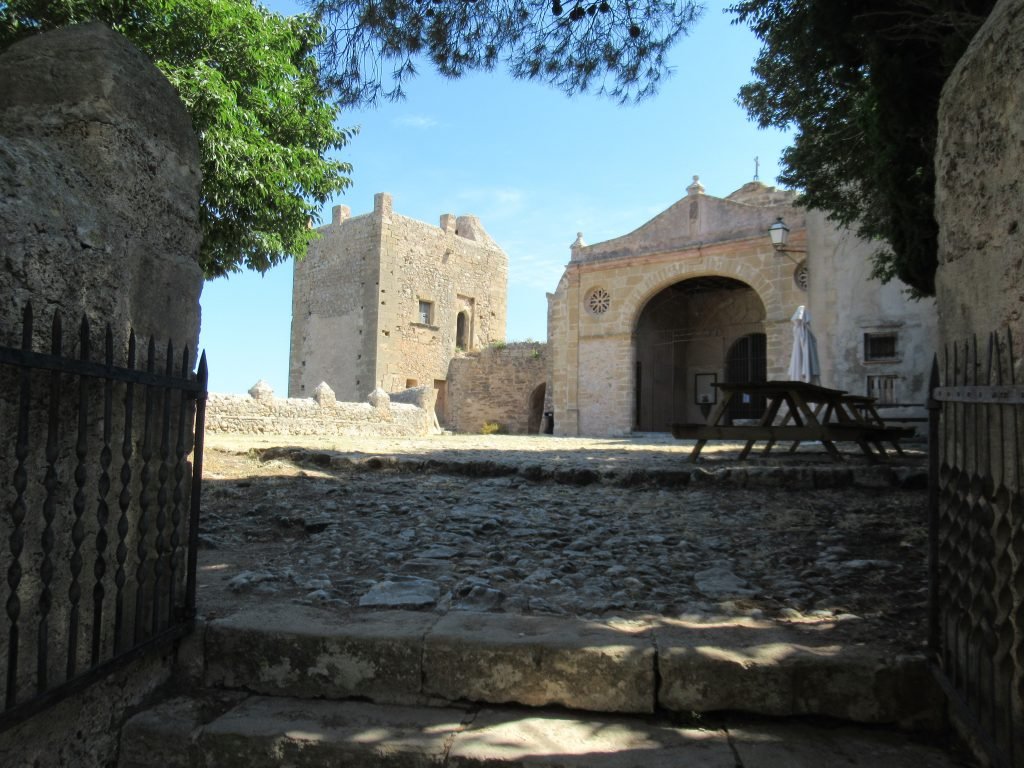
The Calvari Steps
We arrived back down to the town just after midday, having survived the slippery cobbles. After a wander around the maze of narrow streets and restorative cakes and drinks, there was another up to tackle, this time the 365 Calvari steps, one for every day of the year. The sculptures of a local artist (Joan Bennassar), were displayed along the way to distract us from the step count.
Our last stop was the Roman Bridge. Or the probably not really Roman bridge. The Romans were in the area – the ruins of Pollencia, from which Pollenca takes it’s name, can be visited near Alcudia. However, the experts think this bridge is Medieval rather than Roman.
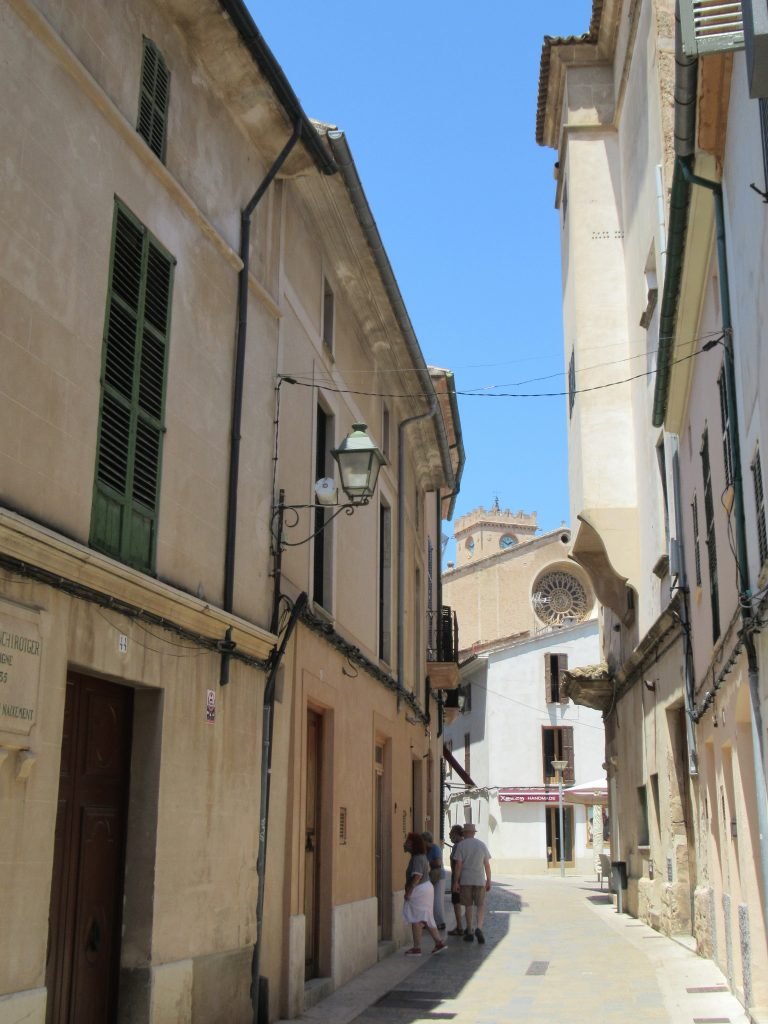
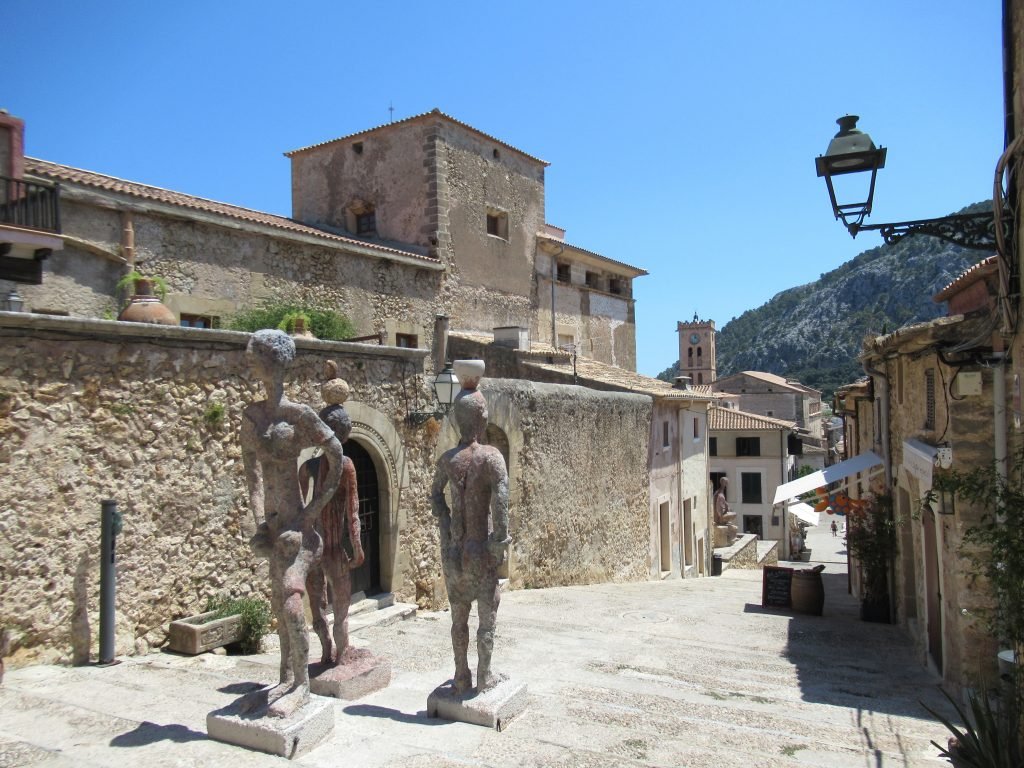
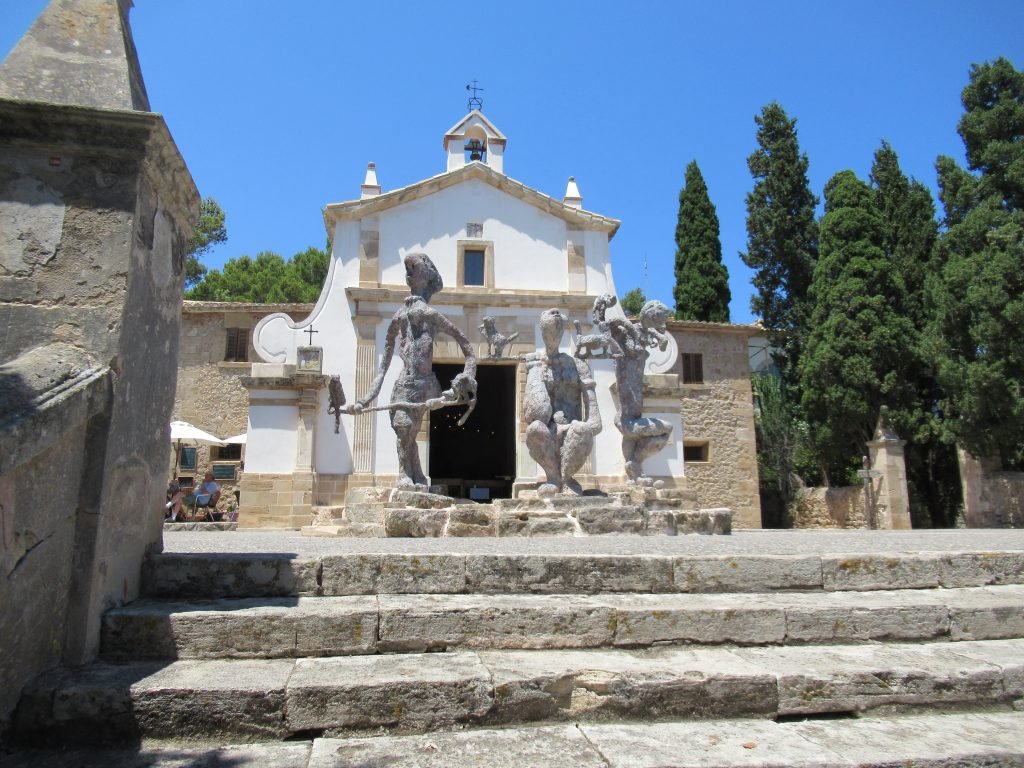

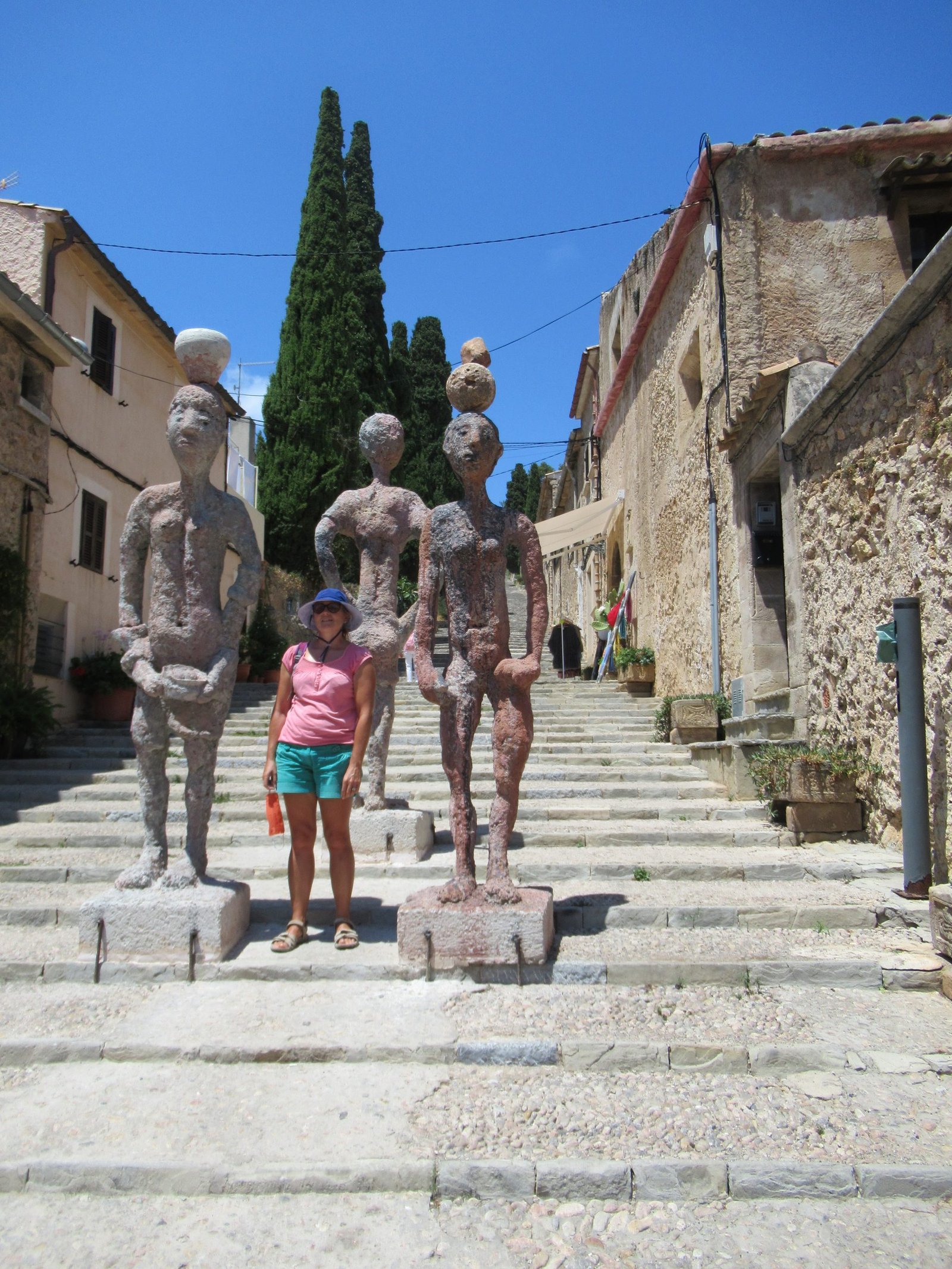
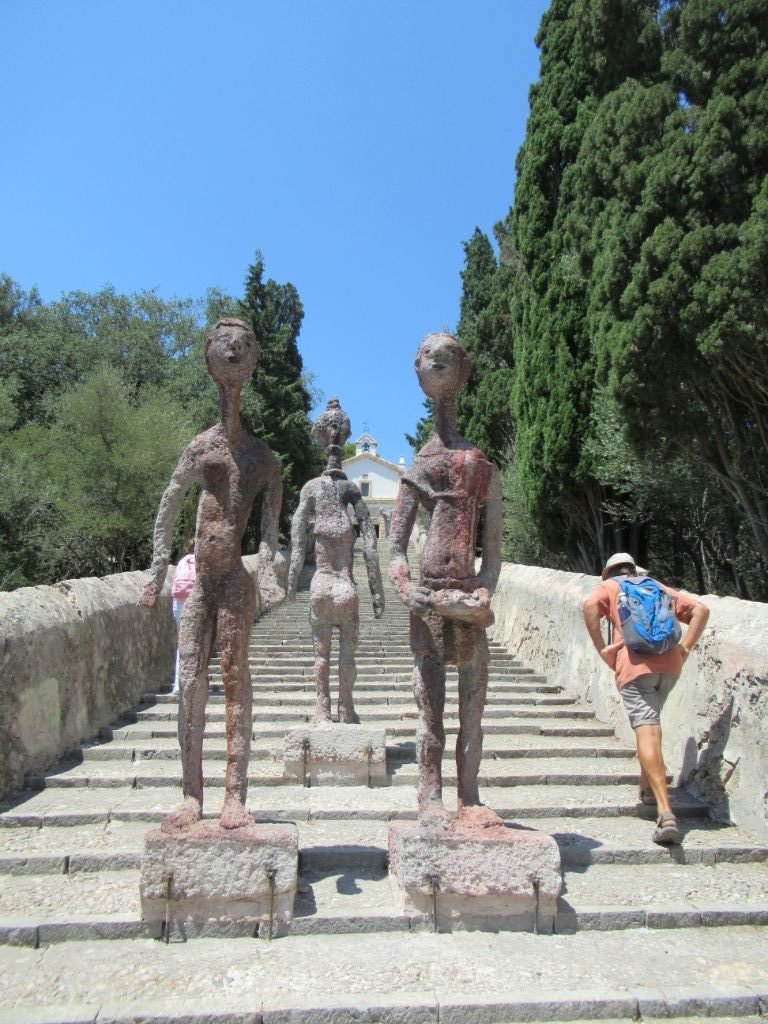
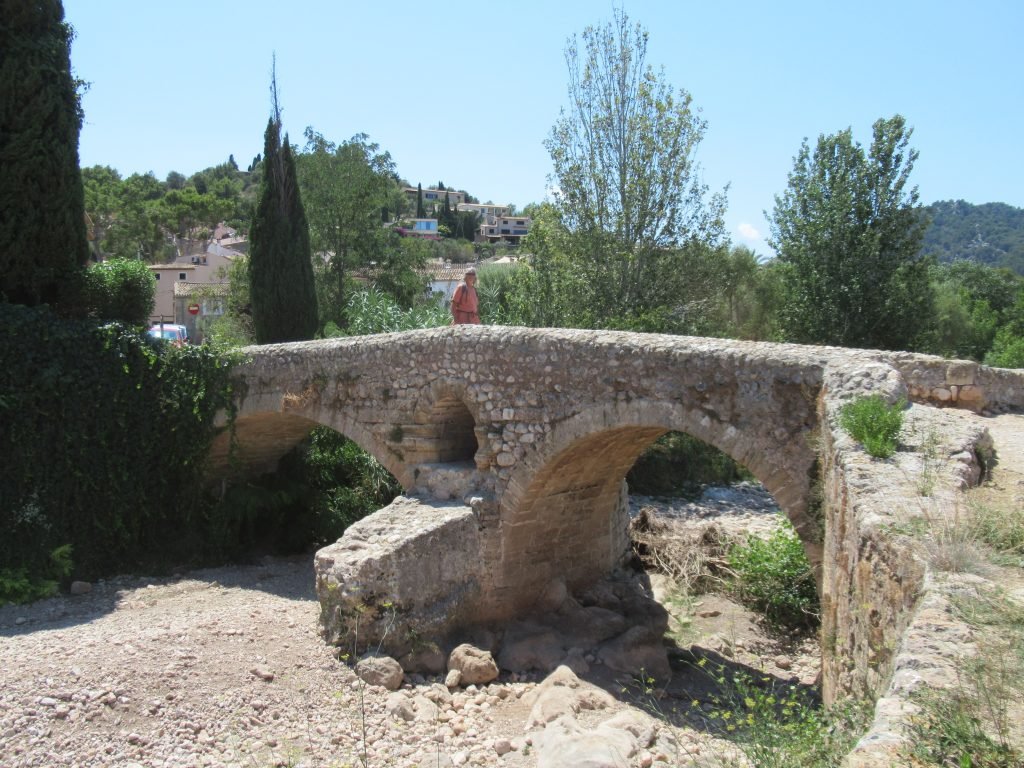
Comet Spotting
There was a little light pollution from the town, however, it didn’t stop us from comet spotting. We were able to just about see Comet Neowise with the naked eye, much more obvious when viewed through binoculars.
However, trying to photograph the light trail proved to be extremely tricky, requiring a long exposure; difficult on a boat even on an evening when there wasn’t any swell or chop. Can you see it in the picture? Look closely at the middle of the photo, there is a very faint line.
Boat Jobs
Emerald has been keeping us busy this summer with an endless supply of things to fix.
She’s also reached the stage where we could no longer ignore the piles of dust gathering on the shelves. I’m very much in the “dust if you must” camp; we realised we’d reached the must stage and carried out a mini spring clean.
The fridge is still being awkward and requires a fettle every morning.
Watermaker Woes
The quality of the product from our watermaker has been steadily declining since we commissioned it in May. Having been in use for 6 seasons, the membranes are likely nearing the end of their working life. We’d hoped to push them through to the end of this season, however, the TDS readings (a test of the water’s quality) we’ve been getting are slowly going up.
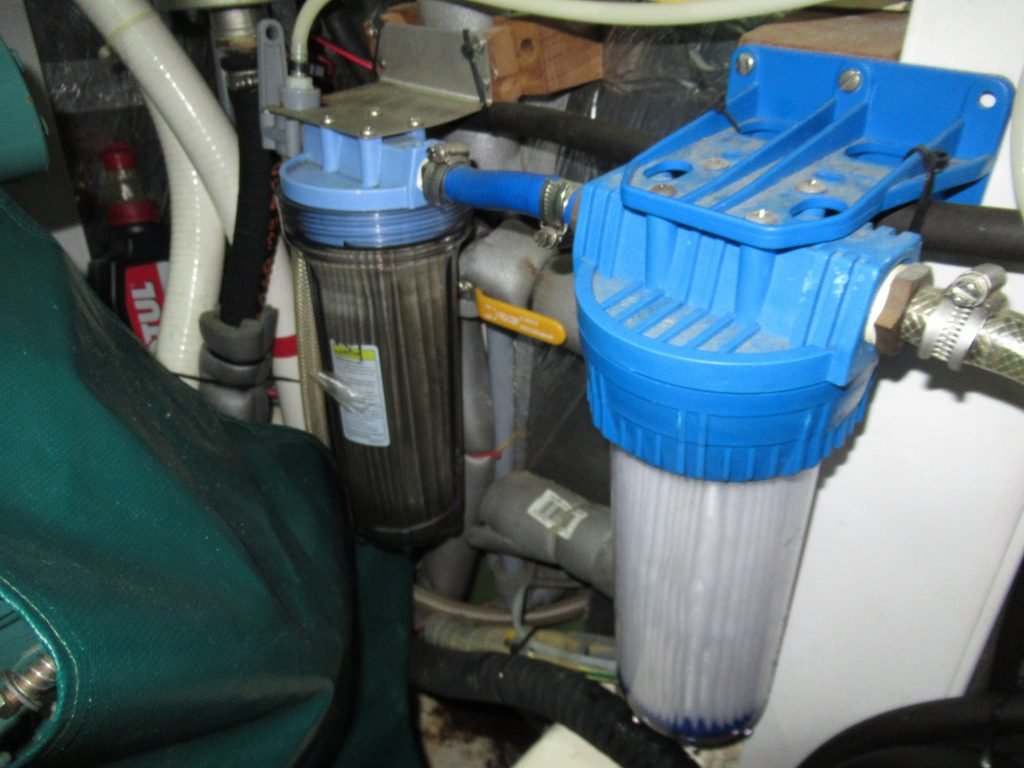
We have two primary filters on the seawater intake; the first one was looking very dirty, so we switched the second one to the first and put a new filter in the second.
We decided to do a flush with fresh water, followed by a pickle to give the membranes a good clean in the hope it would extend their working life. Fingers crossed!
Why No Power?
On our return from the bike ride, Colin did his usual power check. We have two MPPT controllers with Bluetooth capability, allowing us to check the quantity of solar watts made by our bimini and arch arrays. He noticed an issue straight away; one of them was showing zero and had been zero all day. The problem was traced to a loose wire into one of the MPPTs.
Our guess was that as the MPPT heats up and cools through use, the thermal contraction and expansion loosened the main power locking nut, resulting in a bad connection to the batteries. A cable check is now on our monthly battery check procedure.
We chose to continue using Trojan T125 6v batteries on our last battery change. This type of battery is wet lead-acid (FLA), the most cost-efficient in terms of amp-hours. They’re also more forgiving in how they are used than other kinds of battery. In addition, they fit snugly into our battery box – a change to a different technology would mean more than just a simple switch in and out as sizes are not standard. We have 6 units as our house bank and once a year we rotate the position of the cells, in order to try and extend their life beyond the typical 5 years. The downside of FLA is that they require a regular check of the liquid levels which we do once a month and top up as required.
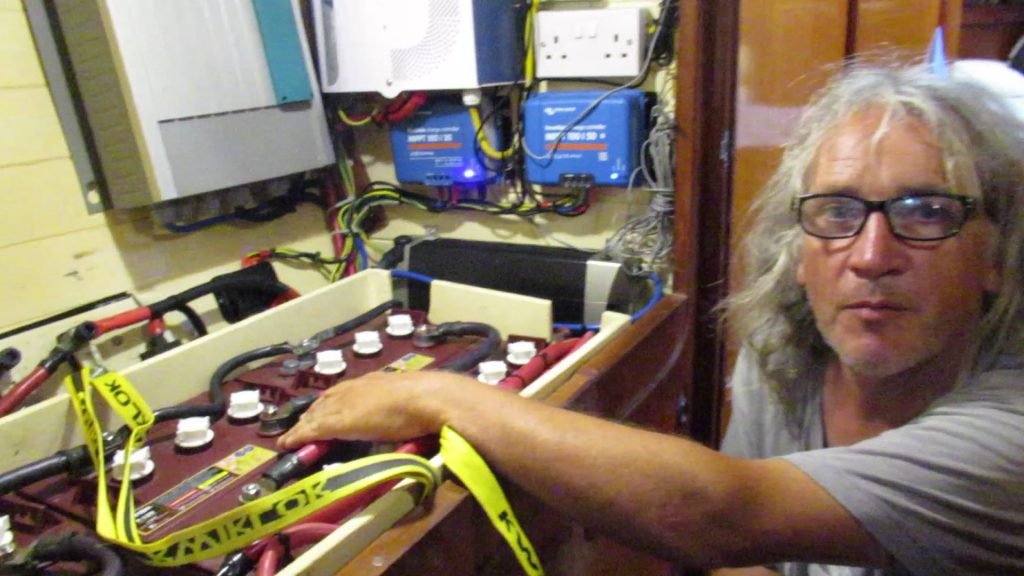
Thunder and Lightning
On the whole, the weather was benign during our time in Pollenca, with mostly sunny days and an occasional overcast one. One evening, black clouds rolled in from the mainland and as darkness fell, the sky put on a light show and thunder rumbled around the peaks. We got off lightly – a gentle rain shower and no nearby strikes. Even the usual wind blast failed to show up.
The day before we left for Menorca, another storm system arrived from the mainland. On the lightningmaps webpage, it looked like it had been very active all day as it moved east. However, it’s energy dissipated as it crossed the sea. There were a few strikes over the island and a splash of rain. This time we also got some wind; a brief hit of 35kts which kicked up the waves across the bay. Then just like that, calm returned.

Sailing Info
10th July: SA Calobra to Pollenca – 29nm
Anchored in 3.5m, sand and weed, in position 39 54.291’N 3 05.66’E
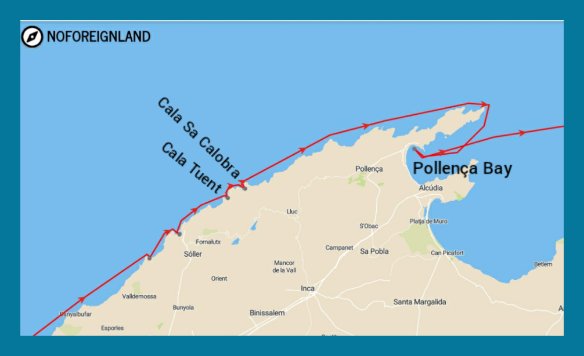
The Social Media Bit: Want to Follow Us?
If you’d like to follow us on other social media platforms (Facebook, Instagram and YouTube), you can do so by using these links:
Or use the link below to track our voyage on NoForeignLand.com.
And finally, you can sign up to receive email notifications of new blogs using the subscribe box at the bottom of this page.
Thank you from Nichola & Colin


